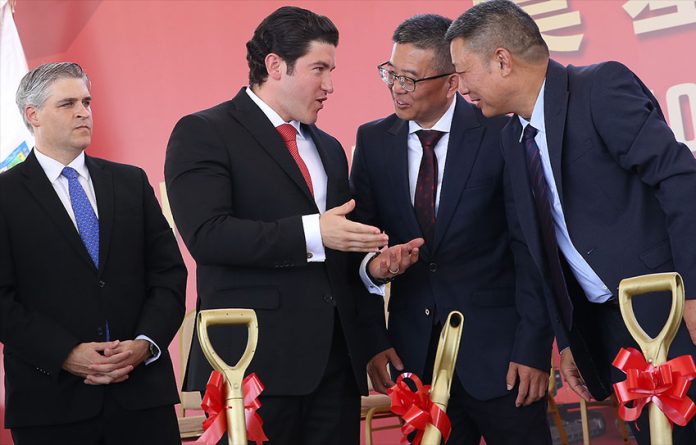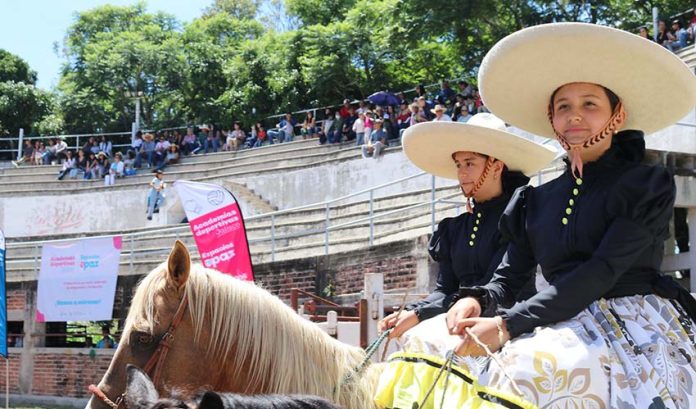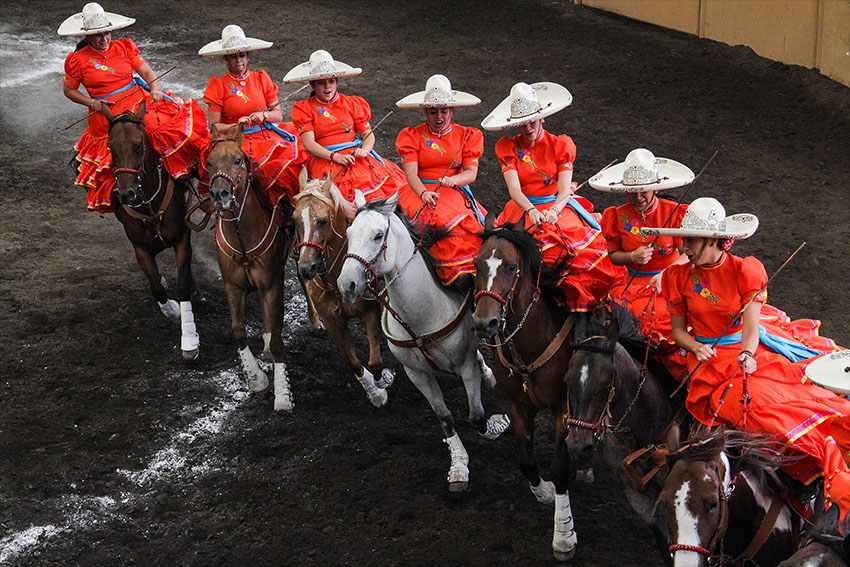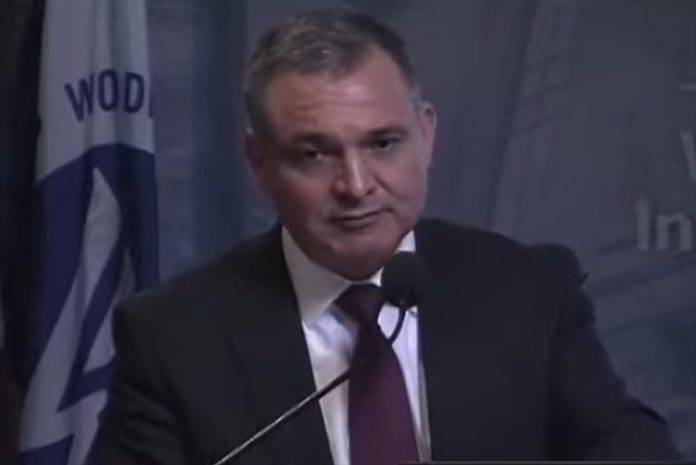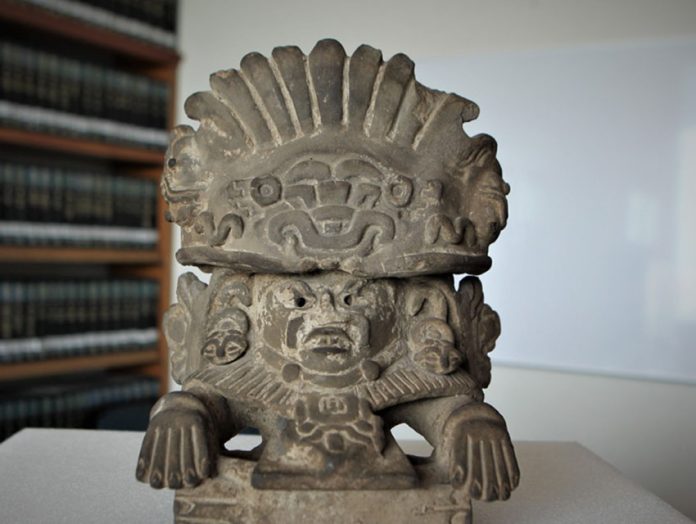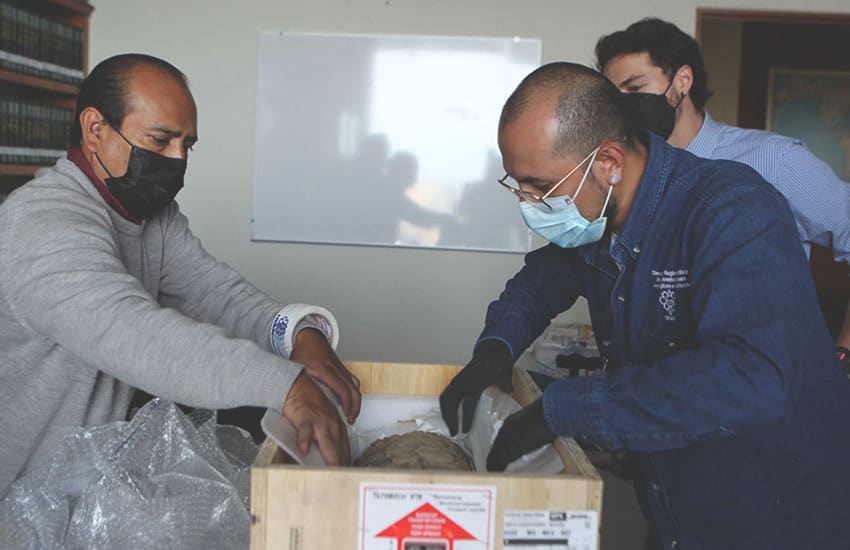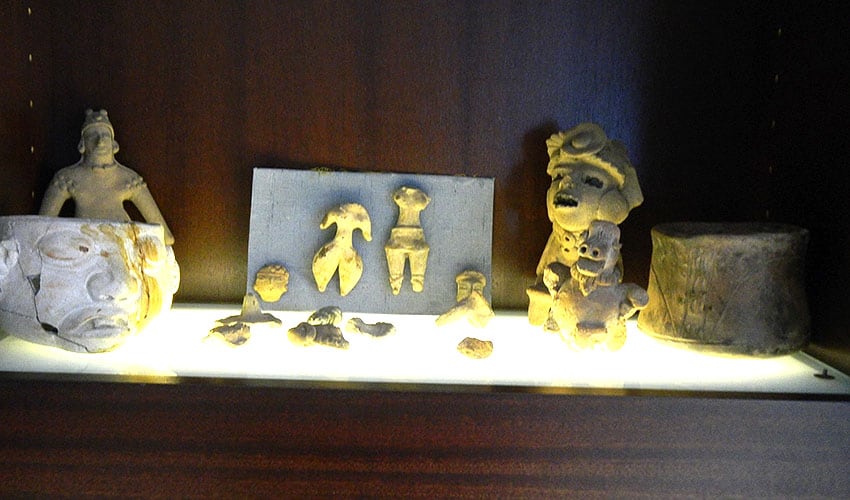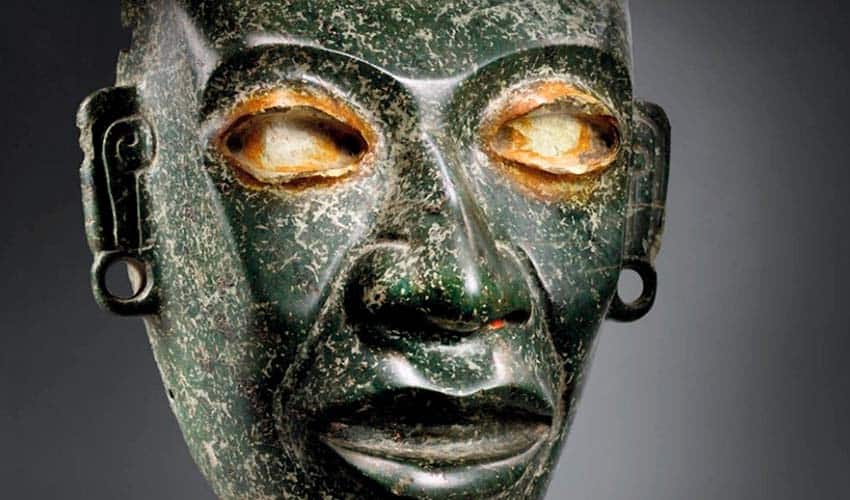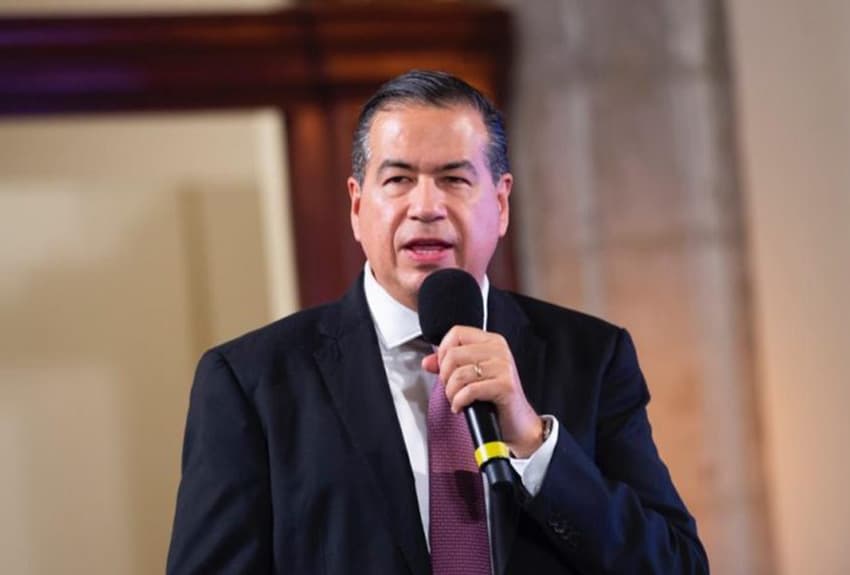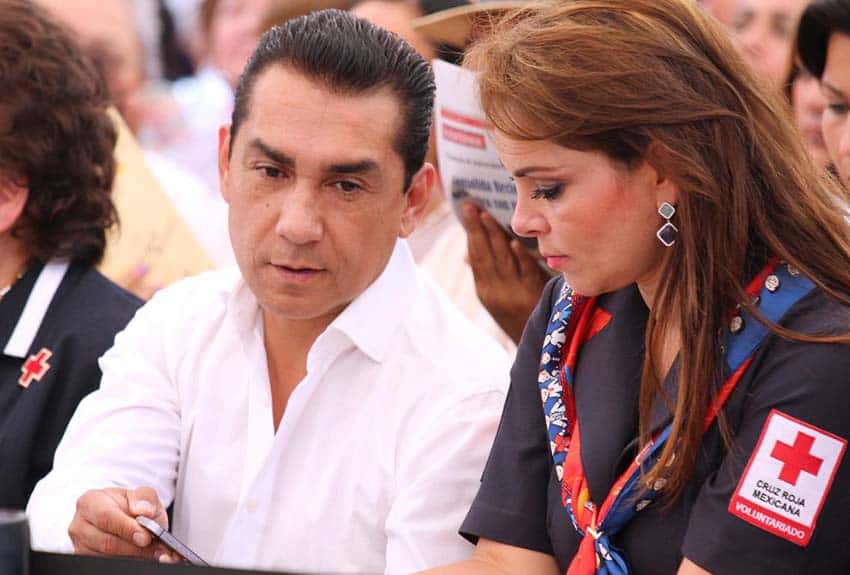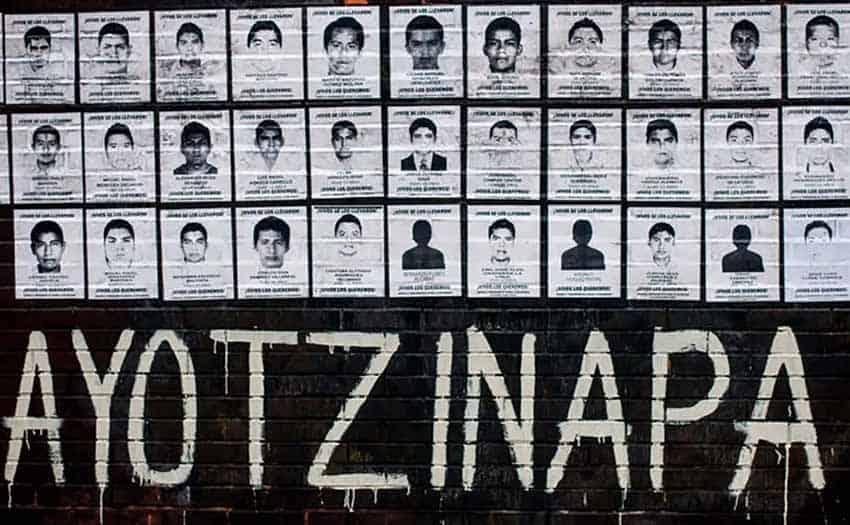A massive banner denouncing impunity and increasing militarization was unfurled on a towering Mexico City monument in the early hours of Friday.
Two female members of a Guanajuato-based collective dedicated to searching for missing persons unrolled the banner from the top of the Estela de Luz (Stele of Light) monument after climbing up the 104-meter high structure, located outside one of the entrances to the Chapultepec Park.
The Hasta Encontrarte collective (Until We Find You) said in a Twitter post that the unfurling of the “monumental” banner was completed at 2:30 a.m.
“Our gratitude to those who outdid themselves for 20 hours to leave a mark of dignity on the #EstelaDeLuz,” the collective said.

It noted that its members were on the structure – which is known colloquially as the “monument to corruption”– while President López Obrador was delivering the “Cry of Independence” and before Friday’s military parade.
From top to bottom the banner reads: “16 years of military impunity. No to the military coup. When will we get independence from the army? The military pact is also patriarchal. The National Guard in the National Defense Ministry = more militarization.”
The “16 years of military impunity” references the length of time the armed forces have been carrying out public security tasks in Mexico. Former president Felipe Calderón deployed the military to combat the country’s notorious cartels shortly after he took office in December 2006.
Since then, soldiers and marines have committed or allegedly committed a range of human rights violations, including extrajudicial killings, while carrying out public security tasks. There have been some arrests, but impunity remains a generalized problem in Mexico.
Most of Mexico’s more than 100,000 missing persons disappeared after Calderón launched the militarized war on drug cartels, a strategy largely perpetuated by former president Enrique Peña Nieto and President López Obrador.
Hasta Encontrarte’s reference to the National Guard recognizes its incorporation into the army, a move criticized by the United Nations and human rights groups such as Amnesty International.
Civil Protection authorities and the Red Cross were unable to suspend the collective’s peaceful protest. Their personnel, according to reports, made their way to the Estela de Luz monument and tried to convince the two Hasta Encontrarte members to come down. However, the women ignored the request and continued with their efforts to unfurl the entirety of the lengthy – and heavy – banner.
Hasta Encontrarte said in another Twitter post that the banner is four meters wide, 100 meters long and weighs 80 kilograms.
Viviana Mendoza, integrante del colectivo @HEncontrarte, del estado de Guanajuato, pide no se mal entienda que se está rescatando a alguien. Explica que quienes escalaron la Estela de Luz están capacitadas para eso.
📸 @lu_fm. pic.twitter.com/m6pKOWgYtY
— adondevanlosdesaparecidos.org (@DesaparecerEnMx) September 16, 2022
Collective member Viviana Mendoza sought to allay safety concerns, telling reporters Thursday night that the two women unfurling the banner “are completely trained to climb to that height.”
“… They have appropriate clothing [for the cold]. We’re in constant communication [with them], … they say they are perfectly fine,” she added.
“… We believe that missing persons and victims of homicide also deserve to be remembered during this Cry of Independence. … Violence isn’t combated with the armed forces, it’s combated with public [policy] improvements and intelligence.”
The unfurling of the banner isn’t the first eye-catching protest carried out by Hasta Encontrarte. It was one of three search collectives that created and “exhumed” mock graves outside the National Palace last December. The aim of that protest was to put the missing persons issue squarely in the sight of President López Obrador and pressure his government to act.
With reports from Aristegui Noticias and Infobae

